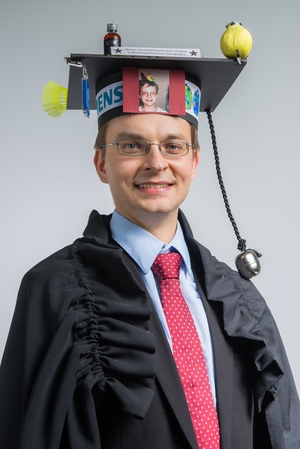Michal Cachovan
Motion Corrected Quantitative Imaging in Multimodal Emission Tomography
Abstract
Nuclear medicine has been using single photon emission computed tomography (SPECT) for several decades in order to diagnose and enable the treatment of patients for various clinical applications. Traditionally, routine SPECT has been used for qualitative image interpretation based diagnosis which was not backed up with data on quantitative assessment of the encountered disease. However, latest research and development introduced a novel and yet unexplored feature of quantitative measurements to clinical practice. With the introduction of new quantitative reconstruction techniques many technological questions have to be answered. This thesis presents novel methods for enhancing quantitative iterative SPECT reconstruction by means of runtime and motion correction. These methods are evaluated with clinical practice and protocols in mind.
Quantitative iterative reconstruction in SPECT is a computationally intensive process with clinical runtime burden. It becomes even more demanding when more precise system modeling is performed in order to improve quantitative accuracy of the reconstructed data. The latest graphics computational hardware of the year 2012 was successfully employed in this dissertation and a novel approach to tomographic reconstruction was proposed. The introduced method uses dedicated graphics hardware. It outperforms any currently known competing implementation by a factor eight and can therefore reconstruct high resolution quantitative images in clinically acceptable time.
Patient motion during SPECT acquisition is a significant degrading factor in quantitative lesion detection, evaluation and therapy planning, yet few clinical products are available in the field that can correct for this effect. A contribution to the field of multimodal motion corrected emission tomography is proposed in this work, which is integrated within the reconstruction. This concept has the potential to improve lesion detectability by correcting motion induced defects and to reduce quantitative errors in the clinical environment. An implementation of the method on graphics cards is introduced, which fulfills clinically acceptable computation times. A quantitative evaluation of bone SPECT is introduced in this thesis and findings are reported that are new in the field of musculoskeletal clinical research. Correlations between bone turnover, bone density and dependence of these biological variables on patients’ age are reported. These results can potentially contribute to a better understanding of bone repair mechanisms in human anatomy and physiology.
